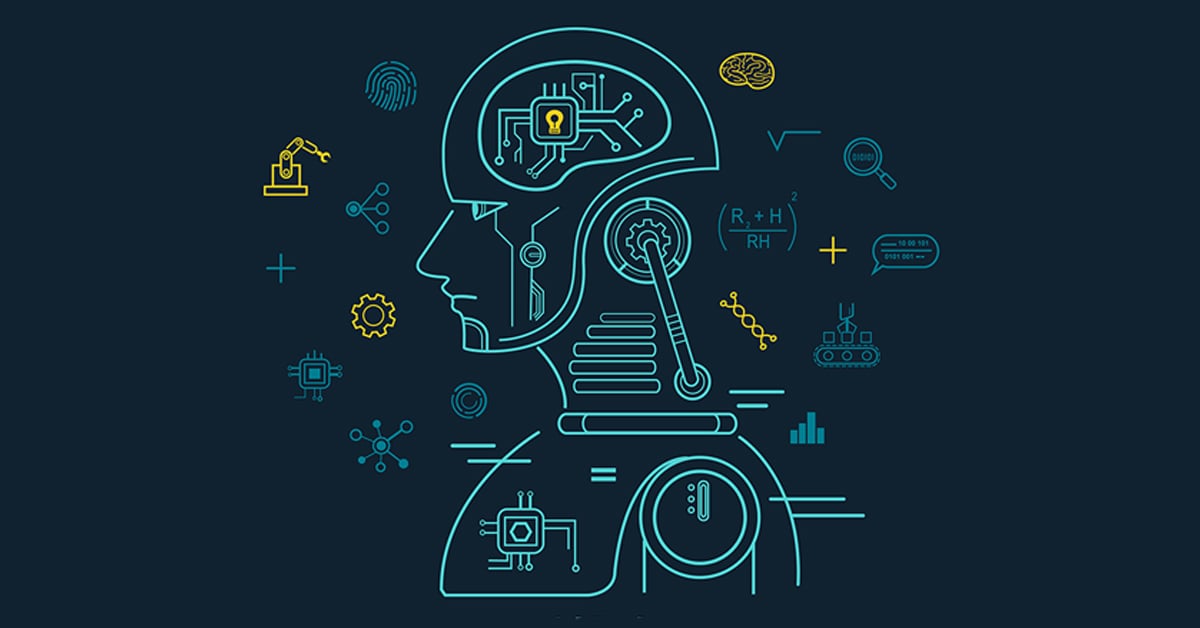Artificial Intelligence (AI) in Digital Asset Management (DAM) offers numerous benefits, such as image text recognition, video transcription and machine learning capabilities. While AI is a powerful tool in DAM systems, it is not without its faults and requires, in some cases, a human behind the scenes ensuring it is behaving as expected.

Image Recognition and Categorisation with AI
One of the primary uses of AI in asset management is creating additional metadata such as tags for each of the asset records. AI can transform the searchability and value of the brand assets in the DAM much faster than a human can or wants to for that matter. For some basic labour tasks, it can be really useful; for example, AI can make the text within images searchable, which is a fantastic feature for ensuring the assets are found quickly by the marketing team.
While AI in DAM does have the absolute speed advantage compared to human input, it is critical to remember that AI cannot wholly replace input from a human or an integrated business system. This is because AI services like Clarifai or Rekognition need to use models as a reference point for organising the metadata results they return. Though it has improved over the years, AI can and does submit false positives into searchable metadata. This means that AI, though it is a powerful tool, will require oversight to ensure it creates the right metadata.
For these points of oversight, it is critical to have a DAM solution that can organise AI metadata separately from human entered (or business) metadata. This ensures that false positives are easy to track and remove, as well as simple to handle. It also means that users clearly see the distinction between AI-generated metadata and business metadata in their search results and can therefore rank and prioritise the results.
Despite this need for oversight, AI is critical to efficient and powerful digital image management tools. In the example above, AI making image text searchable for marketing teams is a useful feature that makes searching and handling marketing assets much quicker, as often the human-entered metadata is either non-existent or applied using a limited taxonomy.
Additionally, searching in-image text ensures that a marketing and design team can easily find similar wording in the assets they need to be working on. This helps maintain brand consistency and ensures that a team is not creating assets already in the DAM database.
AI-Empowered Video and Transcripts
It is no secret that the use of video is on the increase and an important set of assets that need to be managed and distributed. Company video assets can be one of the most time-consuming parts of maintaining a comprehensive digital asset database. The biggest problem is that video assets are one big ‘blob’ of a file, made up of lots of smaller image frames. The valuable snippet you are looking for might be buried in a thirty-minute video. Transcribing videos and assigning proper metadata to them is a near-impossible task for a marketing team, which is where AI can assist.
Video transcription is one of the most useful things you can leverage AI for. For AI systems, sound is much easier to understand than images as there has been more work done on this over the years, which leads to accurate transcriptions that can later be searched and used to understand what is valuable inside videos. For AI, transcribing video is a mature process with several microservices available to use, which means transcriptions often need very little human oversight.
The DAM system taps into the AI microservices. It extracts the metadata so that marketing teams can gather the same metadata for videos as they do for images, making these assets much more searchable and manageable.
Machine Learning
AI leverages an advanced development technique called machine learning (ML), which is critical to its function. ML refers to an AI’s ability to adapt to develop rules over time that can ensure it does not make the same mistake again.
Beyond simple tags, this is what allows truly massive DAM databases to be efficient. The more data the AI has to look at, the better it can become at organising that data. Alongside human assistance, the AI can quickly learn how each asset should be organised and begin completing the task with less and less oversight.
Though ML is a powerful and massive asset to a DAM service, there are still limitations to how effective an AI can be. AI will never be perfect, as there will occasionally be false positives and negatives no matter how much data it has examined. ML requires the investment of time. If you want AI to recognise a specific feature, such as a face, and apply the results to the DAM assets, you need to continuously train and monitor the results. Despite this, ML is what makes AI asset management such an effective tool and critical to maintaining large asset libraries.

Digital Asset Management: Beyond AI
Marketers and designers put assets into DAM systems, but rarely add the appropriate metadata to each piece of content they add. This is the main issue that AI integration within DAM systems are attempting to solve. Similarly to how DAM attempts to keep things effectively organised, AI-powered Sitecore digital asset management systems add the data that humans skip, but machines require human input to keep assets organised.
Additionally, system integrations that augment the metadata assigned to digital assets from business systems and tools add effective search capability and allow the assets to be surfaced more easily. For example, by using data from ERP or PIM systems and integrating it within the DAM adds rich product metadata to the digital assets created as part of the product marketing processes and ensures the asset is used correctly upstream. Having a DAM integrated with your business systems will add valuable business-centric data to your assets and using automation to ingest the assets will reduce the gaps in the rich metadata needed when manually uploading.
Creative Folks and AI in DAM
While AI promises everything a business needs without the need for a DAM service, DAM adds the context that AI needs to organise and interact with assets. DAM services turn thousands of data points that an AI may add into an organisational structure that teams can use and interact with.
AI can assist and augment metadata but is not without its overheads. System integration of business data combined with AI provides the ideal solution to ensuring value and quality in asset production and the digital asset lifecycle.
At Creative Folks, we can implement a robust DAM platform with AI to deliver a seamless DAM experience. For more information on our capabilities, please visit our DAM solutions page.





 Previous
Previous



